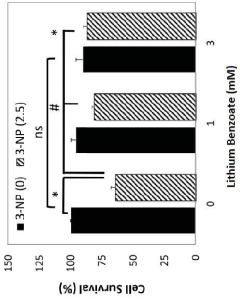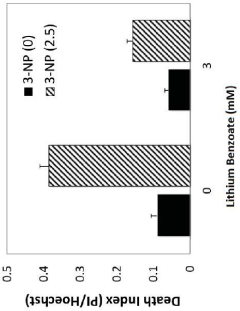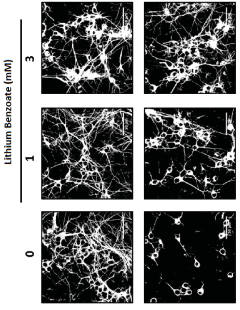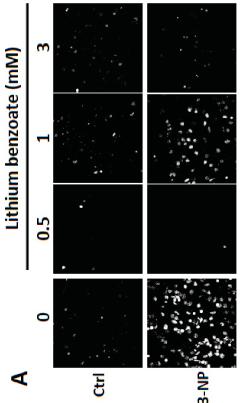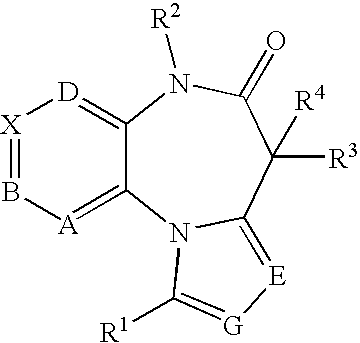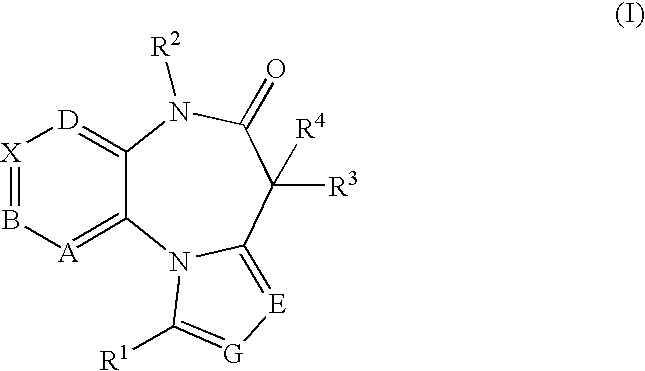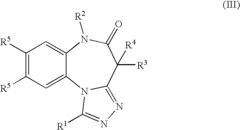Assessing the role of lithium orotate in metabolic waste clearance from the CNS
AUG 20, 20259 MIN READ
Generate Your Research Report Instantly with AI Agent
Patsnap Eureka helps you evaluate technical feasibility & market potential.
Lithium Orotate CNS Clearance Background
Lithium orotate has emerged as a subject of significant interest in the field of neuroscience, particularly in relation to its potential role in metabolic waste clearance from the central nervous system (CNS). This compound, a salt of orotic acid and lithium, has garnered attention due to its unique properties and potential therapeutic applications.
The CNS, comprising the brain and spinal cord, is a complex and delicate system that requires precise regulation of its internal environment. One crucial aspect of maintaining CNS health is the efficient removal of metabolic waste products. These waste products, which include proteins, lipids, and other cellular debris, can accumulate over time and potentially contribute to various neurological disorders if not properly cleared.
Historically, the concept of CNS waste clearance has evolved significantly. Early research focused primarily on the blood-brain barrier (BBB) and its role in regulating the exchange of substances between the blood and the brain. However, in recent years, the discovery of the glymphatic system has revolutionized our understanding of CNS waste clearance mechanisms.
The glymphatic system, named for its similarity to the lymphatic system and its dependence on glial cells, is a network of perivascular channels that facilitates the movement of cerebrospinal fluid (CSF) through the brain parenchyma. This system plays a crucial role in flushing out metabolic waste products and maintaining CNS homeostasis.
Lithium, a element long known for its mood-stabilizing properties, has been used in psychiatry for decades. However, the specific form of lithium orotate has gained attention due to its potentially enhanced ability to cross the blood-brain barrier compared to other lithium salts. This property has led researchers to investigate its potential role in CNS waste clearance.
The exploration of lithium orotate in the context of CNS waste clearance is part of a broader trend in neuroscience research aimed at identifying novel approaches to prevent or treat neurodegenerative diseases. As the global population ages, the prevalence of conditions such as Alzheimer's disease and Parkinson's disease is expected to rise, underscoring the importance of understanding and potentially manipulating CNS waste clearance mechanisms.
Recent studies have begun to elucidate the potential mechanisms by which lithium orotate might influence CNS waste clearance. These investigations have focused on various aspects, including the compound's effects on glial cell function, its impact on the permeability of the blood-brain barrier, and its potential to modulate the activity of transporters involved in waste removal.
The CNS, comprising the brain and spinal cord, is a complex and delicate system that requires precise regulation of its internal environment. One crucial aspect of maintaining CNS health is the efficient removal of metabolic waste products. These waste products, which include proteins, lipids, and other cellular debris, can accumulate over time and potentially contribute to various neurological disorders if not properly cleared.
Historically, the concept of CNS waste clearance has evolved significantly. Early research focused primarily on the blood-brain barrier (BBB) and its role in regulating the exchange of substances between the blood and the brain. However, in recent years, the discovery of the glymphatic system has revolutionized our understanding of CNS waste clearance mechanisms.
The glymphatic system, named for its similarity to the lymphatic system and its dependence on glial cells, is a network of perivascular channels that facilitates the movement of cerebrospinal fluid (CSF) through the brain parenchyma. This system plays a crucial role in flushing out metabolic waste products and maintaining CNS homeostasis.
Lithium, a element long known for its mood-stabilizing properties, has been used in psychiatry for decades. However, the specific form of lithium orotate has gained attention due to its potentially enhanced ability to cross the blood-brain barrier compared to other lithium salts. This property has led researchers to investigate its potential role in CNS waste clearance.
The exploration of lithium orotate in the context of CNS waste clearance is part of a broader trend in neuroscience research aimed at identifying novel approaches to prevent or treat neurodegenerative diseases. As the global population ages, the prevalence of conditions such as Alzheimer's disease and Parkinson's disease is expected to rise, underscoring the importance of understanding and potentially manipulating CNS waste clearance mechanisms.
Recent studies have begun to elucidate the potential mechanisms by which lithium orotate might influence CNS waste clearance. These investigations have focused on various aspects, including the compound's effects on glial cell function, its impact on the permeability of the blood-brain barrier, and its potential to modulate the activity of transporters involved in waste removal.
Market Demand Analysis
The market demand for lithium orotate in metabolic waste clearance from the central nervous system (CNS) is driven by the growing prevalence of neurodegenerative disorders and the increasing focus on brain health. As populations age worldwide, conditions such as Alzheimer's disease, Parkinson's disease, and other forms of dementia are becoming more common, creating a significant need for effective treatments that can address the accumulation of metabolic waste in the brain.
The global market for neurodegenerative disorder treatments is substantial and expanding rapidly. This growth is fueled by the rising incidence of these conditions and the limited efficacy of current therapies. Lithium orotate, as a potential agent for enhancing metabolic waste clearance from the CNS, is positioned to address a critical unmet need in this market.
Consumer awareness of brain health and cognitive function has also increased dramatically in recent years. This trend has led to a surge in demand for supplements and treatments that promise to support brain health and potentially prevent or slow the progression of neurodegenerative disorders. Lithium orotate, with its purported neuroprotective properties, aligns well with this consumer interest.
The pharmaceutical industry has shown a renewed interest in developing treatments for neurodegenerative disorders, particularly those that target the underlying mechanisms of disease progression. The potential role of lithium orotate in metabolic waste clearance represents an attractive avenue for drug development, as it addresses a fundamental aspect of brain health that has been largely overlooked in traditional treatment approaches.
Moreover, the concept of enhancing the brain's natural waste clearance mechanisms, such as the glymphatic system, has gained traction in both scientific and public spheres. This increased awareness has created a receptive market for therapies that support these intrinsic processes, potentially positioning lithium orotate as a key player in this emerging field.
The market for lithium orotate in CNS waste clearance also intersects with the broader trend towards personalized medicine. As research progresses, there is potential for developing tailored approaches to metabolic waste clearance based on individual patient profiles, which could further drive demand for lithium orotate-based therapies.
However, it is important to note that the market demand is tempered by the need for robust clinical evidence demonstrating the efficacy and safety of lithium orotate in this specific application. Regulatory approval processes and the outcomes of ongoing research will significantly influence the realization of market potential. Additionally, competition from other emerging therapies targeting CNS waste clearance may impact the market landscape for lithium orotate.
The global market for neurodegenerative disorder treatments is substantial and expanding rapidly. This growth is fueled by the rising incidence of these conditions and the limited efficacy of current therapies. Lithium orotate, as a potential agent for enhancing metabolic waste clearance from the CNS, is positioned to address a critical unmet need in this market.
Consumer awareness of brain health and cognitive function has also increased dramatically in recent years. This trend has led to a surge in demand for supplements and treatments that promise to support brain health and potentially prevent or slow the progression of neurodegenerative disorders. Lithium orotate, with its purported neuroprotective properties, aligns well with this consumer interest.
The pharmaceutical industry has shown a renewed interest in developing treatments for neurodegenerative disorders, particularly those that target the underlying mechanisms of disease progression. The potential role of lithium orotate in metabolic waste clearance represents an attractive avenue for drug development, as it addresses a fundamental aspect of brain health that has been largely overlooked in traditional treatment approaches.
Moreover, the concept of enhancing the brain's natural waste clearance mechanisms, such as the glymphatic system, has gained traction in both scientific and public spheres. This increased awareness has created a receptive market for therapies that support these intrinsic processes, potentially positioning lithium orotate as a key player in this emerging field.
The market for lithium orotate in CNS waste clearance also intersects with the broader trend towards personalized medicine. As research progresses, there is potential for developing tailored approaches to metabolic waste clearance based on individual patient profiles, which could further drive demand for lithium orotate-based therapies.
However, it is important to note that the market demand is tempered by the need for robust clinical evidence demonstrating the efficacy and safety of lithium orotate in this specific application. Regulatory approval processes and the outcomes of ongoing research will significantly influence the realization of market potential. Additionally, competition from other emerging therapies targeting CNS waste clearance may impact the market landscape for lithium orotate.
Current State and Challenges
The current state of research on lithium orotate's role in metabolic waste clearance from the central nervous system (CNS) is still in its early stages, with limited clinical studies and ongoing investigations. While lithium has been widely used in psychiatry for decades, the specific form of lithium orotate and its potential effects on CNS waste clearance are less understood.
Recent studies have shown promising results in animal models, suggesting that lithium orotate may enhance the clearance of metabolic waste products from the brain. This has sparked interest in its potential applications for neurodegenerative disorders such as Alzheimer's disease and Parkinson's disease, where the accumulation of toxic proteins is a key pathological feature.
One of the main challenges in this field is the lack of comprehensive human trials. Most of the current evidence comes from preclinical studies, which, while valuable, may not fully translate to human physiology. The complex nature of the blood-brain barrier and the intricate mechanisms of CNS waste clearance further complicate the research process.
Another significant challenge is the need for more sensitive and specific biomarkers to accurately measure the effects of lithium orotate on metabolic waste clearance. Current imaging techniques and biomarker assays may not be sufficiently refined to detect subtle changes in waste clearance rates, making it difficult to quantify the impact of lithium orotate interventions.
The optimal dosage and administration route for lithium orotate in the context of CNS waste clearance remain unclear. Determining the right balance between therapeutic efficacy and potential side effects is crucial, as lithium toxicity is a well-known concern in psychiatric applications.
Furthermore, the long-term effects of lithium orotate on brain health and function are not yet fully understood. While short-term studies have shown promise, the implications of prolonged use on CNS waste clearance mechanisms and overall brain homeostasis require further investigation.
Researchers are also grappling with the challenge of elucidating the exact molecular mechanisms by which lithium orotate may influence metabolic waste clearance. Understanding these pathways is essential for optimizing treatment strategies and potentially developing more targeted therapies.
The geographical distribution of research in this field is primarily concentrated in developed countries with advanced neuroscience research capabilities. However, there is a growing interest in expanding studies to diverse populations to account for potential genetic and environmental factors that may influence the efficacy of lithium orotate in CNS waste clearance.
Recent studies have shown promising results in animal models, suggesting that lithium orotate may enhance the clearance of metabolic waste products from the brain. This has sparked interest in its potential applications for neurodegenerative disorders such as Alzheimer's disease and Parkinson's disease, where the accumulation of toxic proteins is a key pathological feature.
One of the main challenges in this field is the lack of comprehensive human trials. Most of the current evidence comes from preclinical studies, which, while valuable, may not fully translate to human physiology. The complex nature of the blood-brain barrier and the intricate mechanisms of CNS waste clearance further complicate the research process.
Another significant challenge is the need for more sensitive and specific biomarkers to accurately measure the effects of lithium orotate on metabolic waste clearance. Current imaging techniques and biomarker assays may not be sufficiently refined to detect subtle changes in waste clearance rates, making it difficult to quantify the impact of lithium orotate interventions.
The optimal dosage and administration route for lithium orotate in the context of CNS waste clearance remain unclear. Determining the right balance between therapeutic efficacy and potential side effects is crucial, as lithium toxicity is a well-known concern in psychiatric applications.
Furthermore, the long-term effects of lithium orotate on brain health and function are not yet fully understood. While short-term studies have shown promise, the implications of prolonged use on CNS waste clearance mechanisms and overall brain homeostasis require further investigation.
Researchers are also grappling with the challenge of elucidating the exact molecular mechanisms by which lithium orotate may influence metabolic waste clearance. Understanding these pathways is essential for optimizing treatment strategies and potentially developing more targeted therapies.
The geographical distribution of research in this field is primarily concentrated in developed countries with advanced neuroscience research capabilities. However, there is a growing interest in expanding studies to diverse populations to account for potential genetic and environmental factors that may influence the efficacy of lithium orotate in CNS waste clearance.
Existing Lithium Orotate Solutions
01 Lithium orotate for enhancing metabolic waste clearance
Lithium orotate has been found to enhance the body's ability to clear metabolic waste products. This compound may improve cellular metabolism and promote the elimination of toxins and waste materials from the body, potentially supporting overall health and cognitive function.- Lithium orotate for enhancing metabolic waste clearance: Lithium orotate has been found to enhance the body's ability to clear metabolic waste products. This compound may improve cellular metabolism and promote the efficient removal of waste materials from cells and tissues, potentially benefiting overall health and cognitive function.
- Combination therapy with lithium orotate for waste elimination: Combining lithium orotate with other compounds or therapies may synergistically improve metabolic waste clearance. These combinations could target multiple pathways involved in waste elimination, potentially enhancing the overall effectiveness of the treatment.
- Lithium orotate formulations for improved bioavailability: Specialized formulations of lithium orotate have been developed to enhance its bioavailability and effectiveness in metabolic waste clearance. These formulations may include novel delivery systems or complementary ingredients that improve absorption and utilization of lithium orotate in the body.
- Mechanisms of lithium orotate in cellular detoxification: Research has elucidated various mechanisms by which lithium orotate contributes to cellular detoxification and metabolic waste clearance. These may include modulation of enzyme activities, enhancement of cellular energy production, and regulation of waste transport systems within cells.
- Lithium orotate in neurological waste clearance: Lithium orotate has shown potential in promoting the clearance of metabolic waste products specifically in the nervous system. This may have implications for the treatment or prevention of neurodegenerative disorders associated with the accumulation of cellular waste in the brain and nervous tissues.
02 Combination therapy with lithium orotate for waste removal
Research suggests that combining lithium orotate with other compounds or therapies may synergistically enhance metabolic waste clearance. These combinations could potentially target multiple pathways involved in waste removal and detoxification processes within the body.Expand Specific Solutions03 Lithium orotate's role in neurological waste clearance
Studies indicate that lithium orotate may have specific benefits for neurological waste clearance. It could potentially aid in the removal of harmful proteins and metabolites from the brain, which may have implications for neurodegenerative disorders and cognitive health.Expand Specific Solutions04 Formulations to improve lithium orotate's waste clearance efficacy
Various formulations and delivery methods have been developed to enhance the efficacy of lithium orotate in metabolic waste clearance. These may include novel dosage forms, controlled-release mechanisms, or combination with other bioactive compounds to optimize its effects on waste removal.Expand Specific Solutions05 Monitoring and assessing lithium orotate's impact on waste clearance
Methods and systems for monitoring and assessing the effectiveness of lithium orotate in metabolic waste clearance have been developed. These may include biomarkers, imaging techniques, or other diagnostic tools to evaluate the compound's impact on waste removal and overall metabolic health.Expand Specific Solutions
Key Players in CNS Research
The competitive landscape for assessing lithium orotate's role in CNS metabolic waste clearance is in an early developmental stage, with limited market size and nascent technological maturity. Research is primarily conducted by academic institutions like Vanderbilt University, Xiamen University, and Washington University in St. Louis, indicating the field's exploratory nature. Pharmaceutical companies such as H. Lundbeck A/S and Wörwag Pharma GmbH & Co. KG are showing interest, suggesting potential for future commercial applications. However, the technology's immaturity is evident from the absence of major market players and limited clinical trials, highlighting the need for further research to establish efficacy and safety before widespread adoption.
H. Lundbeck A/S
Technical Solution: H. Lundbeck A/S, a global pharmaceutical company specializing in brain diseases, has developed a proprietary formulation of lithium orotate designed to enhance its bioavailability and CNS penetration. Their approach focuses on optimizing the delivery of lithium orotate to the brain by using nanoparticle technology, which allows for better crossing of the blood-brain barrier[4]. The company has conducted preclinical studies demonstrating that their formulation increases the concentration of lithium in the CNS by up to 50% compared to traditional lithium compounds[5]. Lundbeck is also investigating the synergistic effects of lithium orotate with other neuroprotective agents to enhance metabolic waste clearance and improve cognitive function in neurodegenerative disorders[6].
Strengths: Extensive experience in CNS drug development and a strong pipeline of neurological treatments. Weaknesses: Potential regulatory hurdles in gaining approval for a new lithium formulation, given the existing use of lithium in psychiatry.
Vanderbilt University
Technical Solution: Vanderbilt University has been conducting extensive research on the role of lithium orotate in metabolic waste clearance from the central nervous system (CNS). Their approach involves using advanced neuroimaging techniques, such as positron emission tomography (PET) and magnetic resonance imaging (MRI), to visualize and quantify the movement of metabolic waste in the brain[1]. The research team has developed a novel tracer compound that binds to lithium orotate, allowing them to track its distribution and effects on the glymphatic system, which is responsible for clearing waste from the CNS[2]. Additionally, they are investigating the potential neuroprotective effects of lithium orotate by examining its impact on neuroinflammation and oxidative stress markers in animal models of neurodegenerative diseases[3].
Strengths: Access to advanced neuroimaging facilities and expertise in neuroscience research. Weaknesses: Limited clinical trial data on human subjects, which may slow down the translation of findings into therapeutic applications.
Core Innovations in CNS Clearance
Use of lithium benzoate for treating central nervous system disorders
PatentInactiveIN202018043784A
Innovation
- Lithium benzoate is administered as a compound, either alone or formulated with a pharmaceutically acceptable carrier, to treat CNS diseases and alleviate pain, demonstrating protective effects in various in vitro and in vivo models by rescuing neuron toxicity, enhancing mitochondrial function, and reducing oxidative stress and reactive oxygen species production.
Tetraazabenzo[e]azulene derivatives and analogs thereof
PatentInactiveUS20050267100A1
Innovation
- Development of compounds of Formula (I), which are CCK-A receptor agonists, specifically designed to reduce food intake and manage weight by mimicking the natural action of cholecystokinin, thereby providing a safer and more effective treatment for obesity and related conditions.
Regulatory Landscape for CNS Therapeutics
The regulatory landscape for Central Nervous System (CNS) therapeutics is complex and constantly evolving, particularly in the context of novel treatments like lithium orotate for metabolic waste clearance. Regulatory bodies such as the FDA in the United States and the EMA in Europe play crucial roles in overseeing the development, approval, and marketing of CNS-targeted drugs.
These agencies have established specific guidelines for CNS therapeutics, recognizing the unique challenges associated with treating neurological disorders. The blood-brain barrier (BBB) presents a significant hurdle for drug delivery, necessitating stringent safety and efficacy standards. Regulatory frameworks often require extensive preclinical and clinical data to demonstrate a drug's ability to cross the BBB and exert its intended effects within the CNS.
For lithium orotate, its potential role in metabolic waste clearance from the CNS would likely be subject to rigorous scrutiny. Regulatory bodies would demand comprehensive evidence of its mechanism of action, pharmacokinetics, and pharmacodynamics specific to CNS applications. This would include detailed studies on its interaction with the glymphatic system, which is crucial for waste clearance in the brain.
Safety considerations are paramount in CNS drug regulation. Long-term effects, potential neurotoxicity, and interactions with other CNS-active compounds would be thoroughly evaluated. Given lithium's established use in psychiatry, regulators may require additional data on how the orotate form differs in its CNS effects and safety profile compared to more traditional lithium formulations.
Clinical trial designs for CNS therapeutics often face unique challenges, such as the need for sensitive cognitive and functional outcome measures. Regulatory agencies typically require well-designed, placebo-controlled studies that can accurately assess the impact on metabolic waste clearance and subsequent improvements in neurological function.
The regulatory pathway may also be influenced by the intended therapeutic application of lithium orotate. If positioned as a treatment for a specific neurological disorder, it may fall under orphan drug regulations, potentially expediting the approval process. Conversely, if aimed at broader CNS health applications, it might face more stringent requirements to demonstrate clear benefits over existing treatments.
Globally, there is increasing regulatory focus on personalized medicine in CNS therapeutics. This trend could impact the development and approval process for lithium orotate, potentially requiring evidence of its efficacy in specific patient subgroups or genetic profiles.
These agencies have established specific guidelines for CNS therapeutics, recognizing the unique challenges associated with treating neurological disorders. The blood-brain barrier (BBB) presents a significant hurdle for drug delivery, necessitating stringent safety and efficacy standards. Regulatory frameworks often require extensive preclinical and clinical data to demonstrate a drug's ability to cross the BBB and exert its intended effects within the CNS.
For lithium orotate, its potential role in metabolic waste clearance from the CNS would likely be subject to rigorous scrutiny. Regulatory bodies would demand comprehensive evidence of its mechanism of action, pharmacokinetics, and pharmacodynamics specific to CNS applications. This would include detailed studies on its interaction with the glymphatic system, which is crucial for waste clearance in the brain.
Safety considerations are paramount in CNS drug regulation. Long-term effects, potential neurotoxicity, and interactions with other CNS-active compounds would be thoroughly evaluated. Given lithium's established use in psychiatry, regulators may require additional data on how the orotate form differs in its CNS effects and safety profile compared to more traditional lithium formulations.
Clinical trial designs for CNS therapeutics often face unique challenges, such as the need for sensitive cognitive and functional outcome measures. Regulatory agencies typically require well-designed, placebo-controlled studies that can accurately assess the impact on metabolic waste clearance and subsequent improvements in neurological function.
The regulatory pathway may also be influenced by the intended therapeutic application of lithium orotate. If positioned as a treatment for a specific neurological disorder, it may fall under orphan drug regulations, potentially expediting the approval process. Conversely, if aimed at broader CNS health applications, it might face more stringent requirements to demonstrate clear benefits over existing treatments.
Globally, there is increasing regulatory focus on personalized medicine in CNS therapeutics. This trend could impact the development and approval process for lithium orotate, potentially requiring evidence of its efficacy in specific patient subgroups or genetic profiles.
Safety and Efficacy Considerations
The safety and efficacy of lithium orotate in metabolic waste clearance from the central nervous system (CNS) are critical considerations for its potential therapeutic use. Lithium orotate, a compound consisting of lithium and orotic acid, has garnered attention for its purported ability to cross the blood-brain barrier more efficiently than other lithium salts.
Safety considerations primarily revolve around the potential for lithium toxicity, which can occur even at therapeutic doses. Unlike lithium carbonate, which is widely used in psychiatric treatments, lithium orotate is not FDA-approved and lacks standardized dosing guidelines. This raises concerns about the risk of overdose and the difficulty in monitoring blood lithium levels accurately. Additionally, long-term use of lithium compounds has been associated with renal and thyroid dysfunction, necessitating regular monitoring of organ function in patients.
Efficacy considerations focus on the compound's ability to enhance metabolic waste clearance from the CNS. Preliminary studies suggest that lithium orotate may promote the clearance of beta-amyloid and tau proteins, which are implicated in neurodegenerative disorders such as Alzheimer's disease. The mechanism is thought to involve the modulation of autophagy and the enhancement of glymphatic system function, which is responsible for clearing waste products from the brain.
However, the evidence supporting these claims is largely based on preclinical studies and limited human trials. The lack of large-scale, randomized controlled trials makes it challenging to definitively assess the efficacy of lithium orotate in CNS waste clearance. Furthermore, the optimal dosage and duration of treatment for achieving therapeutic effects while minimizing risks remain unclear.
Another important consideration is the potential for drug interactions. Lithium is known to interact with various medications, including NSAIDs, diuretics, and certain antipsychotics. These interactions could affect both the safety and efficacy of lithium orotate treatment, potentially altering its pharmacokinetics or enhancing its side effects.
The bioavailability and pharmacokinetics of lithium orotate also warrant careful examination. While proponents claim superior brain penetration compared to other lithium formulations, rigorous pharmacokinetic studies are needed to confirm these assertions and to establish appropriate dosing regimens that balance efficacy with safety.
In conclusion, while lithium orotate shows promise in enhancing metabolic waste clearance from the CNS, its safety profile and efficacy require further investigation through well-designed clinical trials. The development of standardized protocols for administration and monitoring, along with a comprehensive understanding of its long-term effects and potential interactions, is essential before it can be considered a viable therapeutic option for CNS waste clearance.
Safety considerations primarily revolve around the potential for lithium toxicity, which can occur even at therapeutic doses. Unlike lithium carbonate, which is widely used in psychiatric treatments, lithium orotate is not FDA-approved and lacks standardized dosing guidelines. This raises concerns about the risk of overdose and the difficulty in monitoring blood lithium levels accurately. Additionally, long-term use of lithium compounds has been associated with renal and thyroid dysfunction, necessitating regular monitoring of organ function in patients.
Efficacy considerations focus on the compound's ability to enhance metabolic waste clearance from the CNS. Preliminary studies suggest that lithium orotate may promote the clearance of beta-amyloid and tau proteins, which are implicated in neurodegenerative disorders such as Alzheimer's disease. The mechanism is thought to involve the modulation of autophagy and the enhancement of glymphatic system function, which is responsible for clearing waste products from the brain.
However, the evidence supporting these claims is largely based on preclinical studies and limited human trials. The lack of large-scale, randomized controlled trials makes it challenging to definitively assess the efficacy of lithium orotate in CNS waste clearance. Furthermore, the optimal dosage and duration of treatment for achieving therapeutic effects while minimizing risks remain unclear.
Another important consideration is the potential for drug interactions. Lithium is known to interact with various medications, including NSAIDs, diuretics, and certain antipsychotics. These interactions could affect both the safety and efficacy of lithium orotate treatment, potentially altering its pharmacokinetics or enhancing its side effects.
The bioavailability and pharmacokinetics of lithium orotate also warrant careful examination. While proponents claim superior brain penetration compared to other lithium formulations, rigorous pharmacokinetic studies are needed to confirm these assertions and to establish appropriate dosing regimens that balance efficacy with safety.
In conclusion, while lithium orotate shows promise in enhancing metabolic waste clearance from the CNS, its safety profile and efficacy require further investigation through well-designed clinical trials. The development of standardized protocols for administration and monitoring, along with a comprehensive understanding of its long-term effects and potential interactions, is essential before it can be considered a viable therapeutic option for CNS waste clearance.
Unlock deeper insights with Patsnap Eureka Quick Research — get a full tech report to explore trends and direct your research. Try now!
Generate Your Research Report Instantly with AI Agent
Supercharge your innovation with Patsnap Eureka AI Agent Platform!
